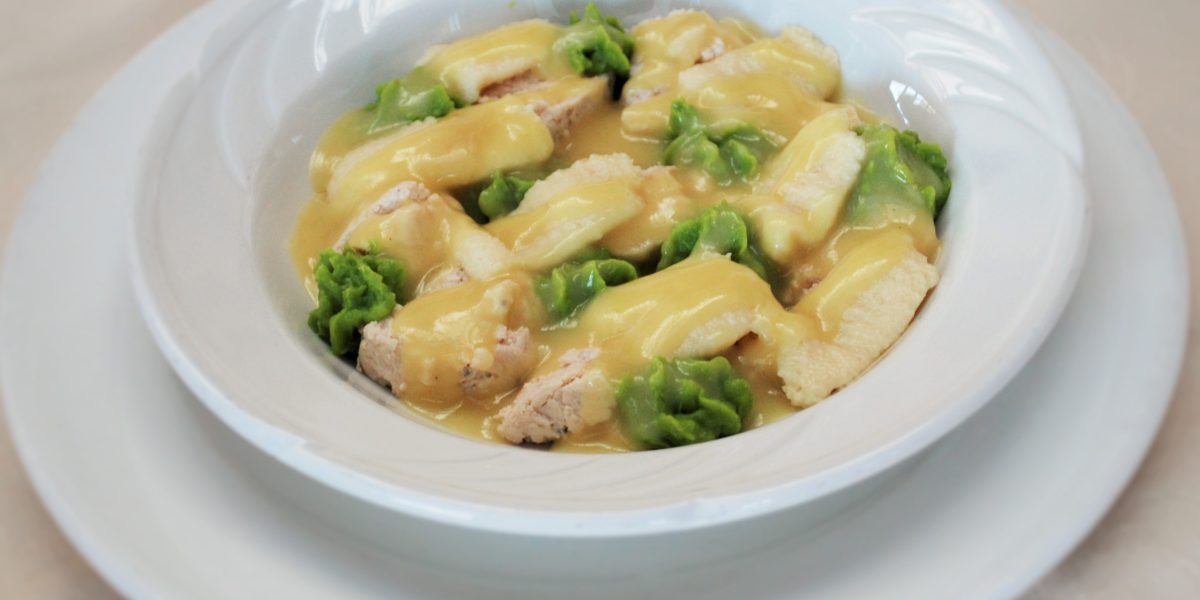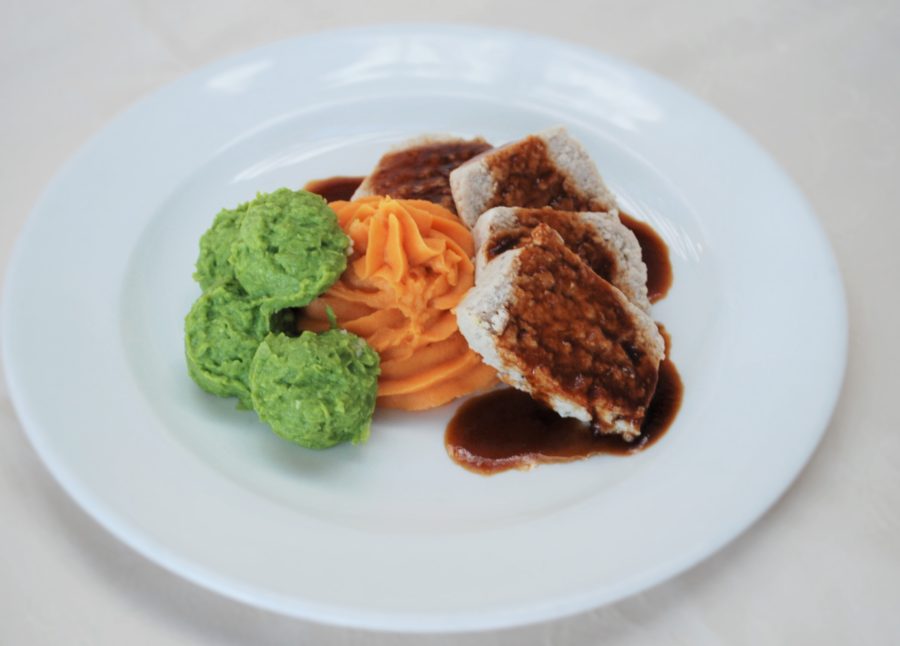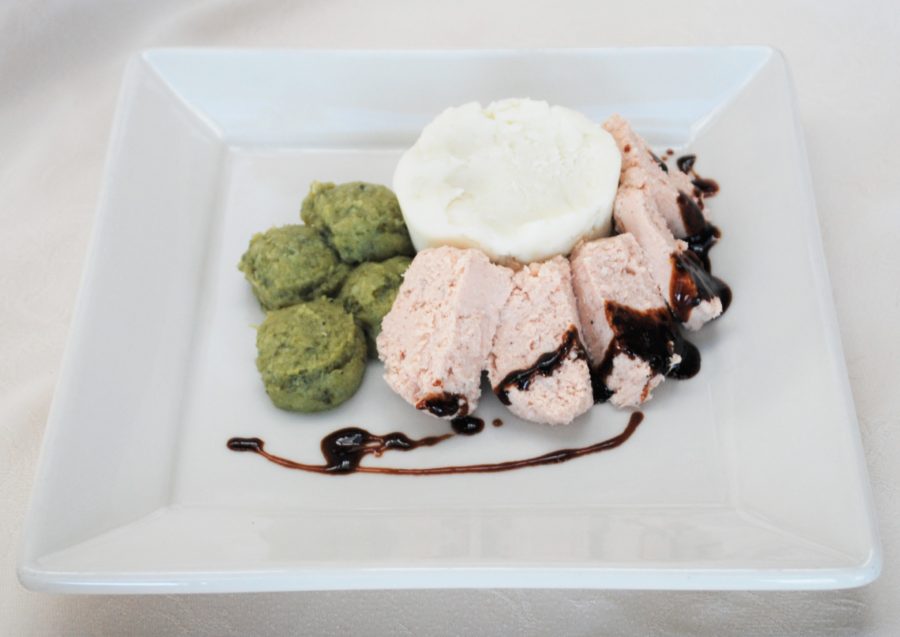
New plating techniques elevate senior dining
By Tara Fitzpatrick
Adam Grafton, Philadelphia-based senior corporate executive chef with Flik Lifestyles, has worked in senior dining for 18 years, and he’s been pushing the quality of food for those on special diets further with Plate Palette, a program for purees, mechanical soft food and finger foods.
“Senior living is ready to be changed, and we’re doing that,” Grafton says, adding that the core of Plate Palette is improving each resident’s experience with food.
“If I’m on a puree diet and I’m in the dining room and the person next to me is on a regular diet and an adult child is visiting and says, ‘Gee, I hope Mom doesn’t get to the point where she has to eat that stuff,’ that’s not good,” Grafton says. “I want that person to look at the puree and say ‘Damnit, I want that! That looks really good.’ We’ve created fantastic recipes with awesome flavor.”
“We are thinking 10 years 15 years down the line,” he continues, “the same independent residents who are getting food that’s nicely plated up now, when that resident has to transition to another level of care and we serve them ‘drop-and-scoop’ purees, we’re in trouble. We need to stay ahead of this and keep serving the same quality of food.”

Techniques both old and new
Plate Palette borrows techniques and ingredients from classical French cooking (think terrines and pates) and molecular gastronomy (using agar-agar, a natural thickener made from algae).
Grafton and his Flik culinary team have been creating new recipes and step-by-step photos for the Plate Palette program since it began about twoyears ago. Just recently, 12 new vegetable recipes were added to the lineup of 28 core dishes, such as chicken and dumplings and pork with Brussels sprouts and sweet potatoes, pictured in the step-by-step photos.
The recipes, continuous training and step-by-step photos help set a standard for senior living cooks in the field, who may be working in smaller, satellite kitchens or pantries, rather than the central kitchen/trayline of the old days of senior dining.
“When you look at the standards, it’s not just recipes but also plating techniques,” Grafton says.
The plating of the purees is done in one of four main ways: a ring mold, a terrine, flex molds or as a quenelle (two spoons create a football shape). For example, the chicken in the chicken and dumplings is made of pureed chicken with white beans and egg whites, placed in a ring mold then sliced, with pureed pasta and peas piped in, and a rich, flavorful chicken veloute (stock thickened with a roux) ladled on top.

The move away from artificial thickeners
Also, major component of Plate Palette is “what we’re not doing,” Grafton says. “We’re not using commercially prepared thickeners, additives and powders to achieve a good texture; we’re using clean ingredients.”
When creating fresh fruit purees (and not turning to applesauce as a solution—“That’s the easy way out,” Grafton says), cooks using the Plate Palette program can add chia seeds, tapioca powder and agar-agar rather than chemically addled powders. Egg whites and legumes provide the texture for pureed proteins, which add additional nutrients and fiber to the finished dish.
In addition to purees, finger food is also addressed through the program. Chicken tenders are replaced with braised pork empanadas, for example. Sauteed spinach, which is usually a no-go for finger food diets, can be placed into a frittata or a phyllo cup.

What’s next?
Grafton says he’s really excited about the rollout of a new feature of Plate Palette: bowls, which builds on the popularity of soup for senior diners, making more of a meal out of it.
“We’ve taken great recipes for soup, like a butternut squash bisque or a leek and potato vichyssoise, and then residents can choose their starch, placed in the middle of the bowl, then choose a vegetable and protein on top, and then we will pour soup overtop and they’ll have a fantastic dish that really speaks comfort food,” Grafton says.
Overall, the Plate Palette program is more work, but it’s not difficult to execute, he adds.
“You’ve got to prepare for it and have a plan for it from a production standpoint,” he says. “It takes a little bit more time to plate up. But it’s not difficult.”
*Originally appeared on Food Management on February 28, 2018.